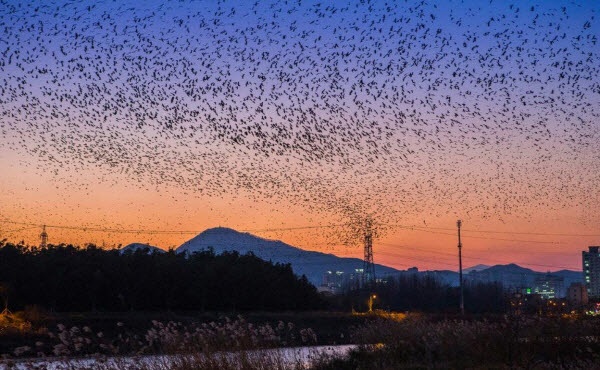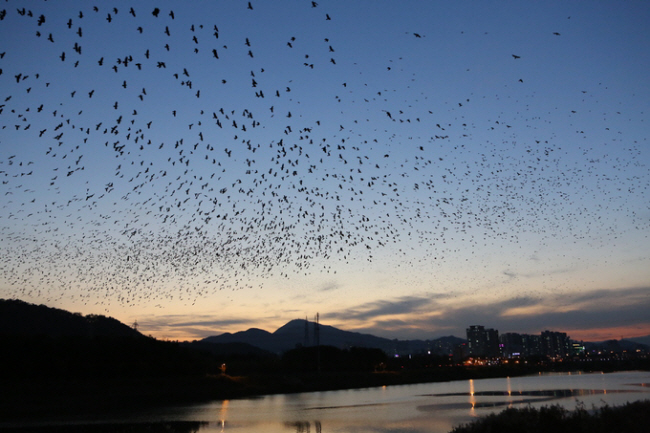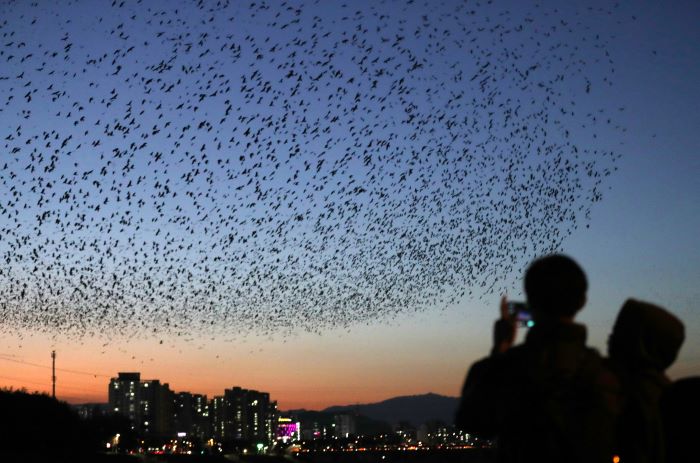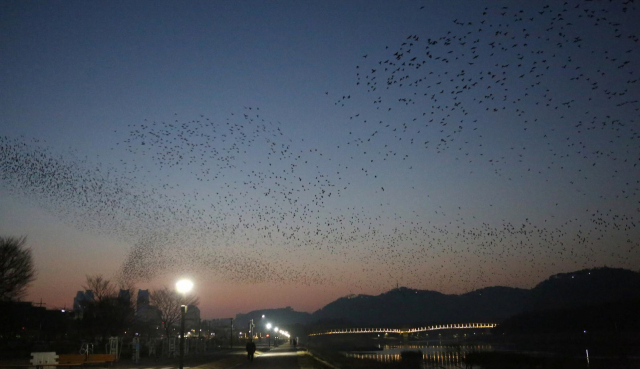ULSAN, Dec. 03 (Korea Bizwire) – Ulsan, a prominent migratory birding destination in Korea, announced on Saturday the commencement of daily operations for an ecological education center dedicated to rooks (Corvus frugilegus) at the Taehwa River Ecotourism Experience Center throughout December.
The Taehwa River Ecotourism Council will oversee the center, serving as a comprehensive Biological Niche Gazette offering detailed insights into the ecological behaviors of specific migratory birds, notably rooks, the focal point of observation. Rooks are mainly resident birds, but the northernmost populations may migrate southwards to avoid the harshest winter conditions.
Witnessing the arrival of rooks in Ulsan is truly breathtaking. Annually, around October, a staggering 100,000 of these wintering birds migrate to the Taehwa River, where they stay until March.
During late fall, tens of thousands of rooks from Siberia and Mongolia journey to the Korean Peninsula’s migratory flyway in pursuit of food, finding refuge in the Taehwagang Bamboo Forest along the Taehwa River until the following March.
At 4:30 p.m. daily, the rooks assemble around the Taehwagang Bamboo Forest for their nightly rest, engaging in a spectacular choreography at 5:40 p.m. before returning to their roosts.
While Ulsan has faced challenges in certain areas due to complaints from residents about rooks’ droppings, successful initiatives, such as ‘guiding rooks to inhabit Taehwagang Bamboo Forest,’ have been implemented and are now a recognized specialty of Ulsan.
Designated as the second national garden in Korea after Suncheon Bay in 2019, the Taehwagang in Ulsan is a rich repository of ecological resources on the Korean Peninsula.
The awe-inspiring choreography performed by the rook flock has become a nationally acclaimed Ulsan specialty, prompting the city to establish a commentary center for citizens to appreciate the grand spectacle with insightful commentary.
Despite concerns about the spread of highly pathogenic avian influenza (AI) in 2016, Ulsan remained unscathed, maintaining its status as a clean area. Although the detection of AI virus in wild birds increased in Ulsan and neighboring regions like Gyeongnam, Gyeongbuk, Daegu, and Busan, it was confirmed that crows, particularly rooks or ravens, exhibit greater resilience to AI than ducks.
This resilience has bolstered the reputation of ravens as robust migratory birds resistant to avian influenza, propelling the momentum of tourism commercialization in the region.
However, there are also concerns that the population of rooks or migratory ravens in the Taehwa River, which once exceeded 110,000 birds, reportedly plummeted last winter.
While climate change is a major factor, researchers believe that the decrease in agricultural land for foraging is also contributing to the decline. Additionally, in the coming years, the power lines that serve as stopovers for the birds are expected to disappear. It remains to be seen how this will affect the rooks, as the undergrounding of the power lines is planned.
While Ulsan uses the rooks as a symbol of ecological restoration, it has not been able to accumulate its own data to date, and it has been pointed out that it should create a sustainable research base by networking animal rescue centers, the Taehwa River Ecology Center, whale museums, and other locally-based biological research institutions in addition to the Migratory Bird Promotion Center.
Image credit: Ulsan-si, Korea Tourism Organization, Yonhap / photonews@koreabizwire.com











